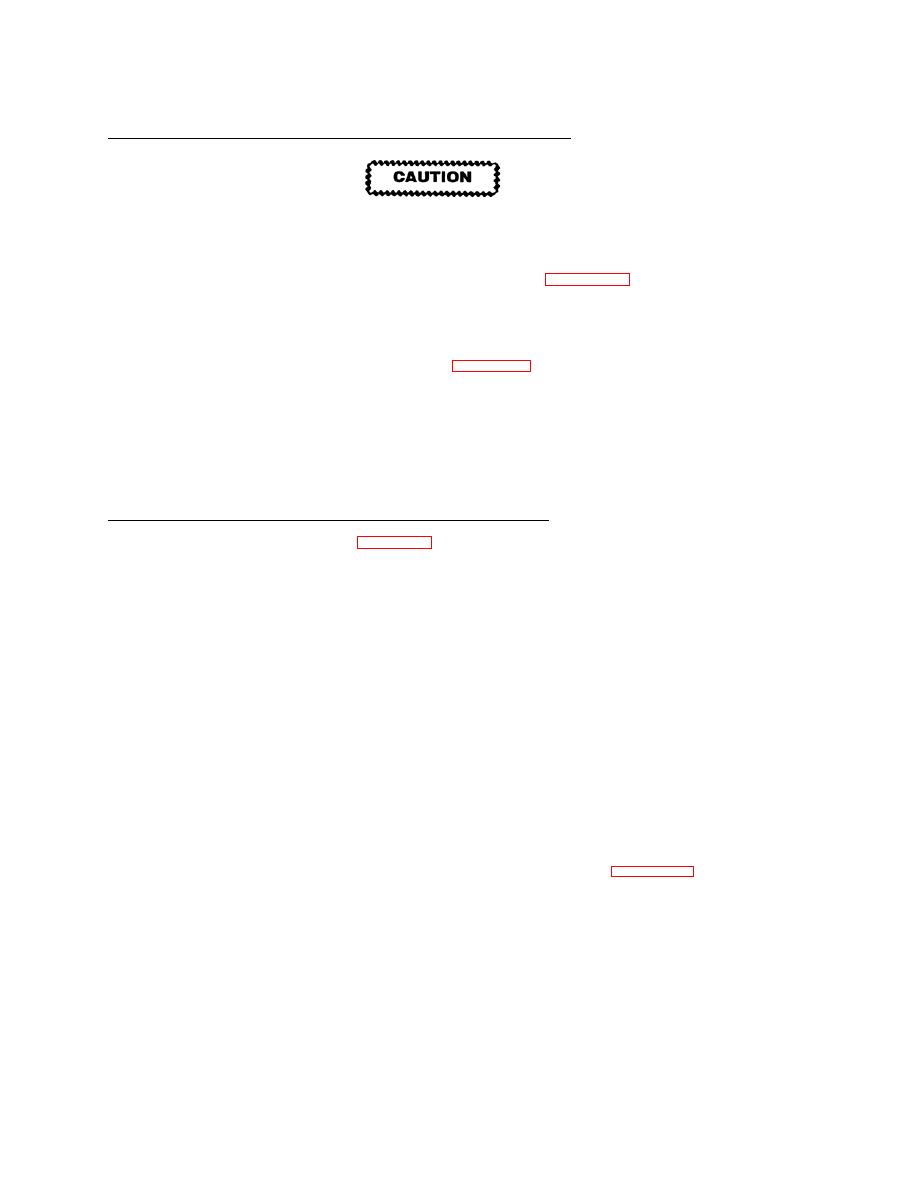
TM 10-5410-228-24
3.5
GENERAL AIR CONDITIONING MALFUNCTIONS
Continued.
Do not cause flood-back (liquid flow) through suction line as liquid flood-back could cause
severe damage to compressor.
The thermal expansion valve is factory-set. Do not attempt to adjust. If the thermal
expansion valve is identified as the problem, replace it (refer to para 3.9.10). Any attempt to
adjust the thermal expansion valve may result in damage to the equipment.
Test operation of thermal expansion valve/sensor bulb as follows:
Turn air conditioning system (compressor) off.
Gain access to the evaporator coil (refer to para 3.9.9).
Carefully place the remote sensor bulb in a container filled with ice water.
Turn air conditioning system (compressor) on.
Remove the remote bulb from the ice water and warm it in your hand. At the same
time, feel the suction line for a rapid temperature change. A decreasing temperature
indicates flood-through of liquid R22 refrigerant. If R22 refrigerant floods through
the valve, the thermal expansion valve and sensor are operating properly.
Problem lies with thermal expansion valve (figure 3-1). Typical thermal expansion valve problems are as
follows:
a. Thermal Expansion Valve Inoperative or Has Lost Its Charge. The thermal expansion valve consists
of a valve located on the liquid line of the evaporator coil and a remote sensing bulb. The remote
sensing bulb is secured to the evaporator output suction line. If the valve is inoperative, the bulb has
lost its charge, or the interconnecting capillary tube is broken, the valve will either maintain in
almost closed position or may close completely.
b. Thermal Expansion Valve Erratic. Usually caused by a faulty thermal expansion valve, due to an
improperly installed or loose feeler bulb, or low evaporator coil loading due to air flow and air flow
temperatures.
c. High Evaporator Coil Superheat. Possible causes include: inadequate R22 refrigerant charge, faulty
thermal expansion valve, restriction in the liquid line filter/drier or in the liquid line itself, or
extremely low head pressure.
NOTE
Occasionally the filter/drier in the liquid line may become blocked with foreign material in
the system. When this happens, the liquid line leaving the filter/drier will feel cooler than
the liquid entering. If it is badly blocked, some sweat or frost may appear at the drier outlet.
When either condition occurs, the filter/drier should be changed (refer to para 3.9.13).


